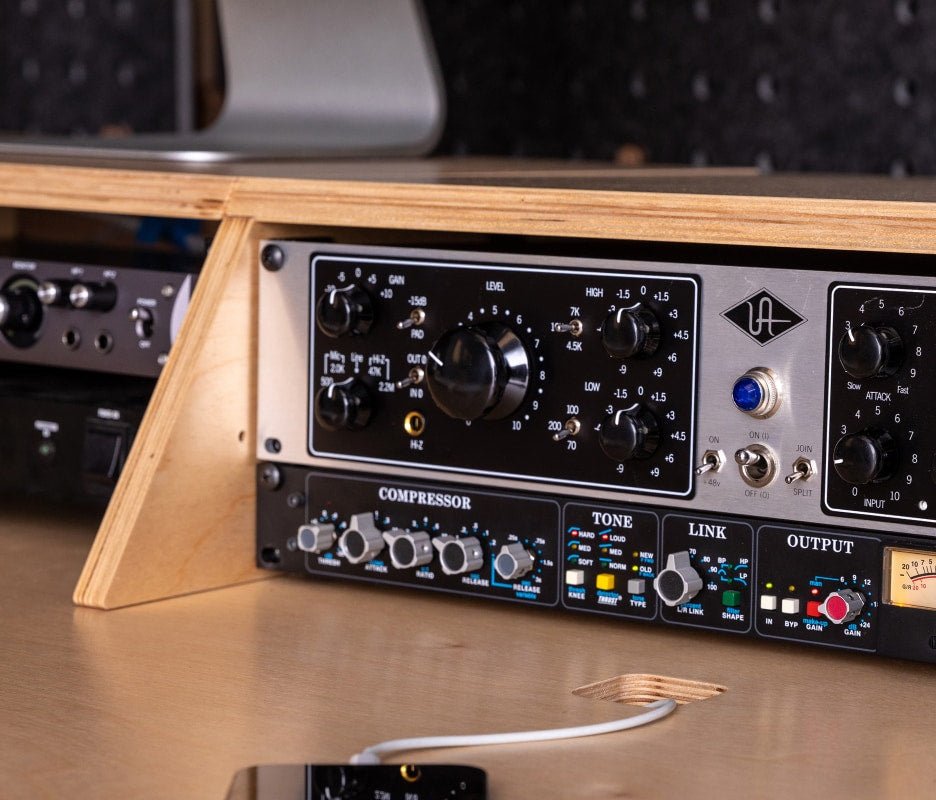This subject has been touched on before, but we often treat our studios with a conventional wisdom based on what we’ve seen in videos and pictures of other studios without any real understanding of what’s going on. We see what looks like a padded cell with dark geometric foam shapes and kind of default to thinking that’s what we need. However, that’s actually not what pros do, and treating our walls without thinking about bass management is only doing half the job.
While obviously getting high frequencies balanced is important, as well as not listening to flutter echo and ugly reverb while mixing or even worse, recording those artifacts smearing overtones, most of the difficulty in recording and mixing happens below 1kHz where the fundamentals of most instruments are fighting it out, and especially below 400Hz in the mud of the mix, which is below the effective range of most foam absorbers.
For this reason, the foundational design of professional studios have low frequency response in mind. You’ve probably gathered that pro studios don’t turn their rooms into padded cells, are oddly shaped, and are often big, while these attributes do help with high frequencies, this mostly impacts the lower end, and it’s always easy to add high frequency absorption after the fact with Gobos or flexible walls.
Why is bass management often an afterthought for us at home?
I’ll hazard a few guesses. One, people don’t know, but since you’ve read this far, you no longer have that excuse. Two, a couple of bass traps doesn’t look as impressive as a bunch of wall treatment coverage, so budget is assigned accordingly, which leads into my third guess, and that is, effective bass traps aren’t cheap. While it is a lot cheaper to buy effective bass traps than to build an oddly shaped room or a huge one, good traps that utilize some kind of membrane, mass or diaphragmatic absorption are a lot more expensive than chunks of foam. However, if you do want your studio to be like the pros, investing in making your room sound better is ultimately better bang for your buck than a lot of gear.
You can have thousands of dollars of microphones, pres and compressors recording thousands of dollars of instruments, but if the room you're recording in has all kinds of reinforcement and sounds like poo, you’re just getting pristine recordings of poo. The same principle applies to playback and mixing. If your low end isn’t sorted, your mixes won’t translate.
Now, don’t get me wrong, absorbers are important too, in fact, so is diffusion, you need to treat your room holistically, but as part of that, bass management is critical to any kind of acoustic treatment scheme, and like the pros, should be foundational to how you plan on treating your studio.



